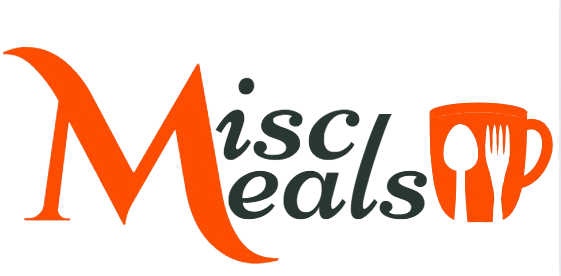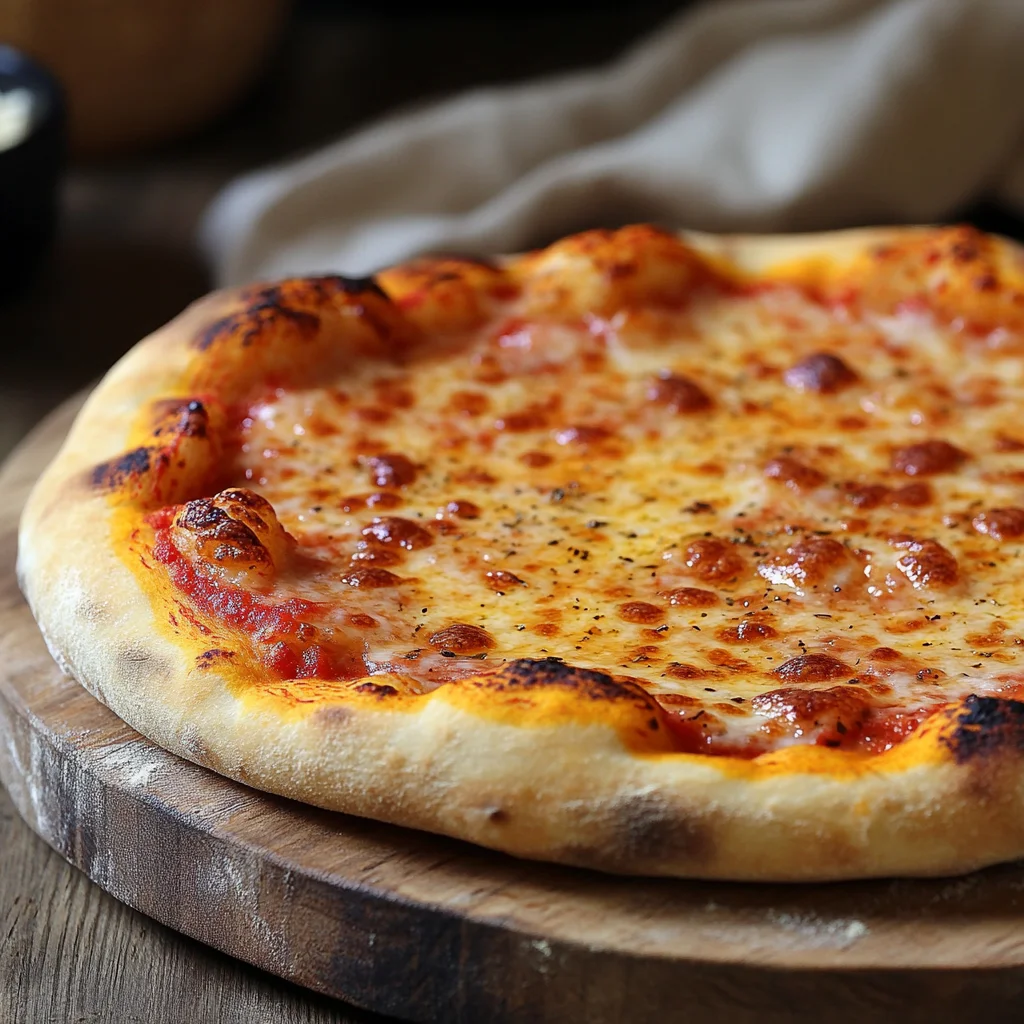Discover the secrets to perfecting Crust Pizza, where the magic starts at the base. This guide focuses on the art of crafting the perfect crust and crispy on the outside, soft and chewy on the inside. Whether you’re aiming for a thin New York-style or a thick, hearty Chicago deep dish, mastering the crust is essential to creating the ultimate pizza experience. Learn about different types of dough, fermentation methods, and baking techniques that will elevate your homemade pizzas to pizzeria-quality. Join us as we explore how a great crust makes all the difference in the world of pizza.
Table of Contents
Popular Crust Pizza Recipes
If you’re looking for recipes to use these amazing crusts, consider trying these fan favorites:
Classic Margherita Pizza
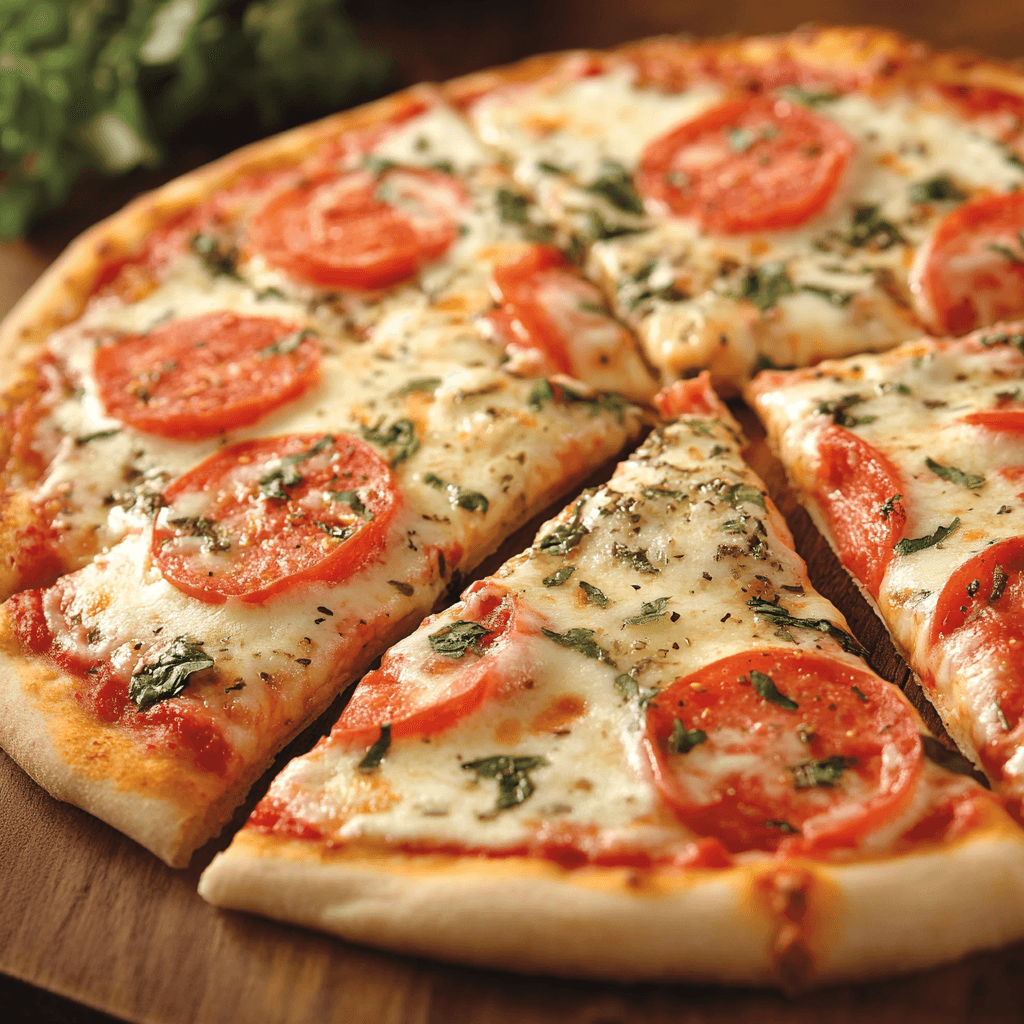
Ingredients
1 pre-made traditional or whole-grain pizza crust
1 cup tomato sauce
8 oz fresh mozzarella, sliced
Fresh basil leaves
2 tbsp olive oil
Salt to taste
Directions
- Preheat the oven to 475°F (245°C).
- Spread tomato sauce evenly over the pizza crust.
- Place mozzarella slices and basil leaves on top.
- Drizzle with olive oil and sprinkle with salt.
- Bake for 10–12 minutes until the crust is crispy and the cheese is melted.
BBQ Chicken Pizza
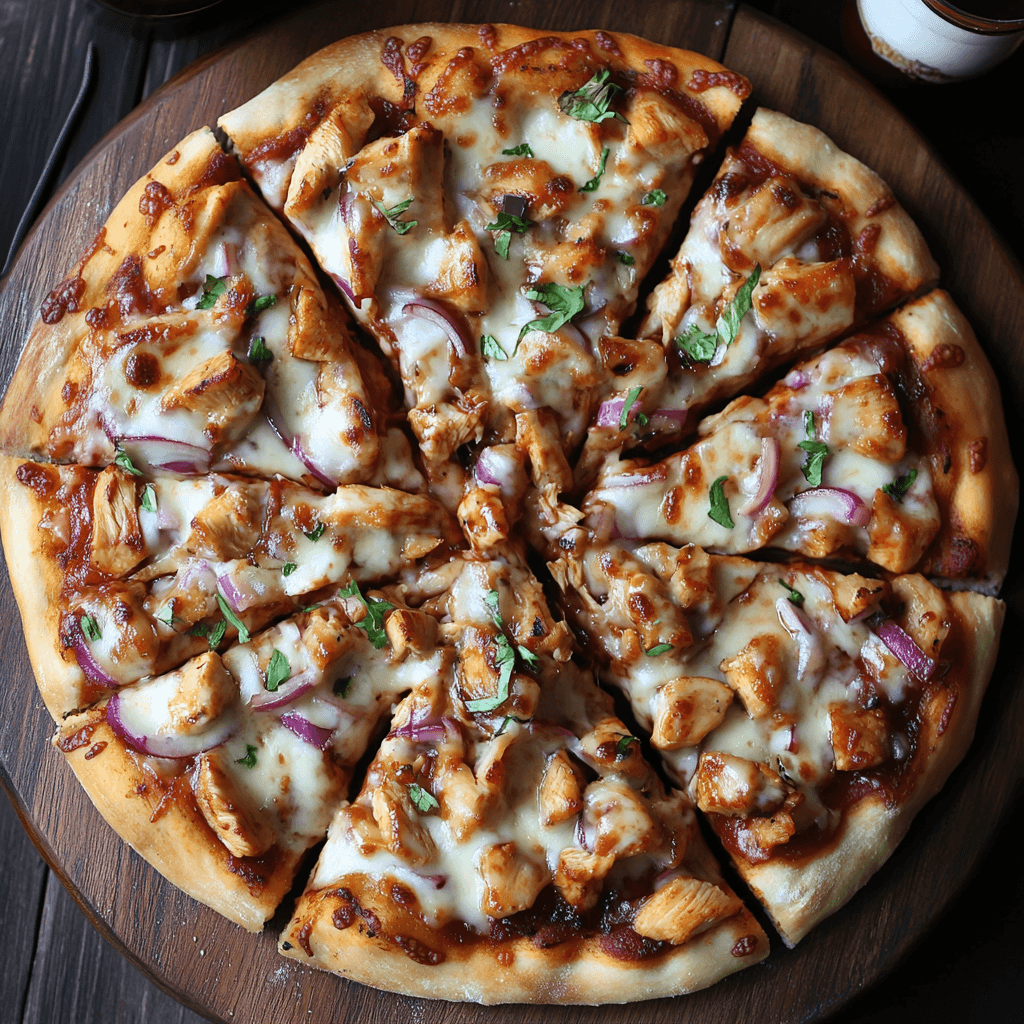
Ingredients
1 gluten-free or traditional pizza crust
1/2 cup BBQ sauce
1 cup cooked, shredded chicken
1 cup shredded mozzarella cheese
1/2 cup sliced red onion
Fresh cilantro for garnish
Directions
- Preheat the oven to 475°F (245°C).
- Spread BBQ sauce over the crust.
- Top with chicken, mozzarella, and red onion.
- Bake for 12–15 minutes until the cheese is bubbly.
- Garnish with chopped cilantro before serving.
Cauliflower Crust Pizza
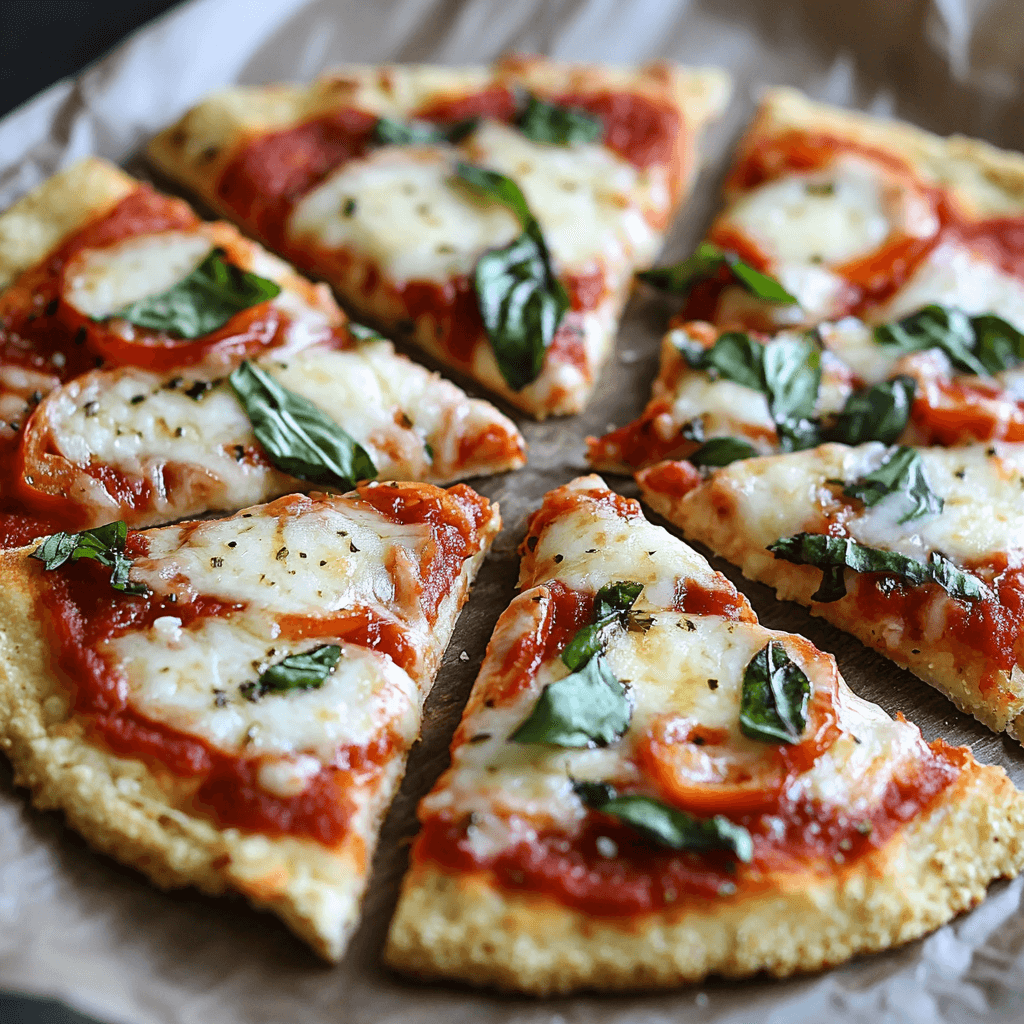
Ingredients
1 medium cauliflower, riced
1/2 cup shredded mozzarella cheese
1 egg, beaten
1/2 tsp garlic powder
1/2 tsp dried oregano
Toppings of choice
Directions
- Preheat the oven to 425°F (220°C).
- Microwave riced cauliflower for 5 minutes and let it cool. Squeeze out excess moisture using a clean towel.
- Mix cauliflower with mozzarella, egg, garlic powder, and oregano to form a dough.
- Spread the dough onto a parchment-lined baking sheet and shape into a crust.
- Bake for 10–12 minutes until golden.
- Add toppings and bake for another 8–10 minutes.
A Brief History of Crust Pizza: From Naples to the World
The history of Pizza crust is as rich and varied as the dish itself. Here’s a look at its origins and evolution:
Origin in Italy: The journey of Pizza crust begins in Naples, Italy, during the 18th century. Early versions of pizza featured simple flatbreads topped with tomatoes and herbs, making it an affordable and nutritious meal for the working class. The Neapolitan Pizza crust, characterized by its thin, soft, and slightly charred texture, emerged as the gold standard for traditional pizzas. Its dough, made from simple ingredients—flour, water, salt, and yeast—was carefully crafted to achieve a perfect balance of chewiness and crispness.

Evolution of Pizza crust Styles: Over time, the humble Neapolitan Pizza crust inspired variations across Italy and beyond. The Roman-style Pizza crust developed as a contrast, offering a crisp, cracker-like texture. Meanwhile, Sicilian Pizza crust introduced a thick, airy crust, often baked in rectangular pans. Each region in Italy began to adapt the Pizza crust to suit local tastes and available ingredients, leading to a diverse array of pizza styles.
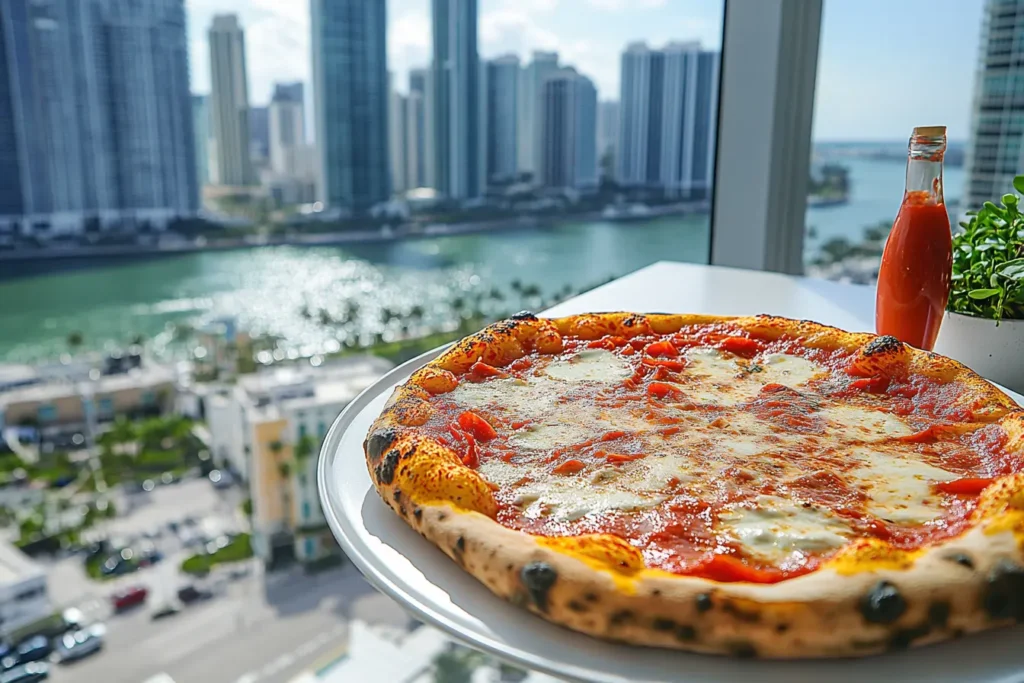
Global Adaptation of Pizza crust: As pizza gained global popularity, Pizza crust styles evolved to reflect the culinary preferences of different cultures. In the United States, for instance, the Chicago deep-dish Pizza crust emerged as a rich and buttery counterpart to the traditional thin crust. New York City popularized a foldable, slightly crispy Pizza crust, while California’s artisan pizzas showcased creative toppings on sourdough bases. In Asia, unique Pizza crust such as cheese-filled or sweet potato-infused variations demonstrate how pizza continues to adapt and innovate worldwide.
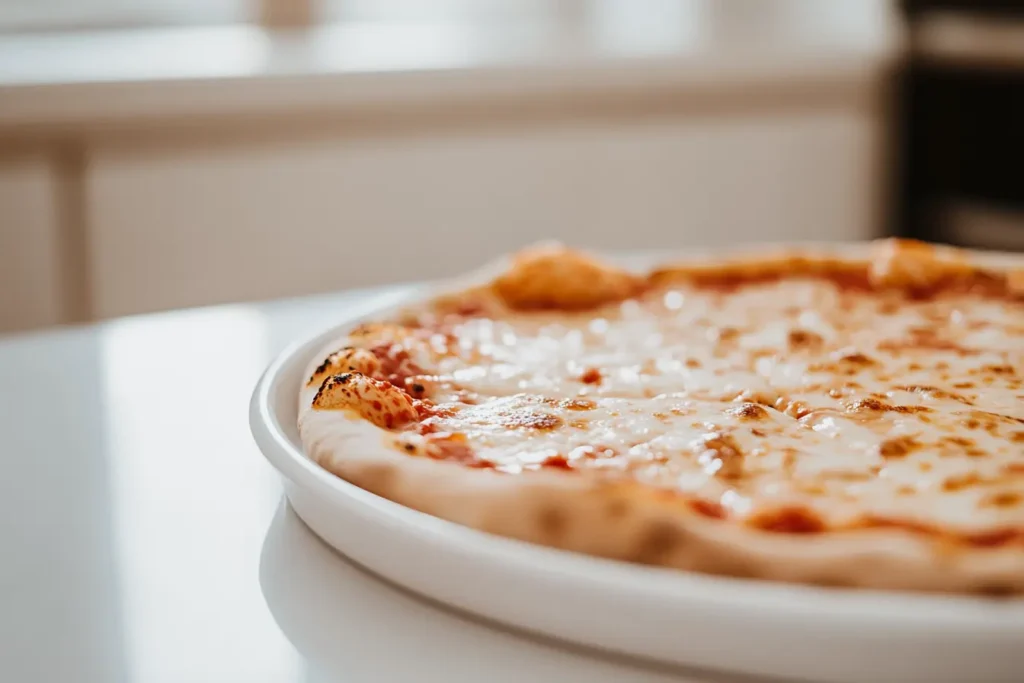
The history of Pizza crust is a testament to its versatility and cultural significance, serving as a canvas for creativity and tradition alike.
Types of Crust Pizza: A World of Delicious Options
Pizza crust is the foundation of any great pizza. From classic styles to modern trends, the variety of Pizza crust allows for a customized dining experience. Here, we explore the types of Pizza crust that cater to diverse tastes and dietary needs.
Classic Crust Pizza Styles:
Thin Pizza crust: Thin Pizza crust is a favorite for those who enjoy a crisp texture and a lighter pizza. This Pizza crust style, prominent in Neapolitan and New York-style pizzas, ensures that the toppings shine. The dough is rolled or stretched thinly before baking, resulting in a cracker-like crunch with a slight chewiness.
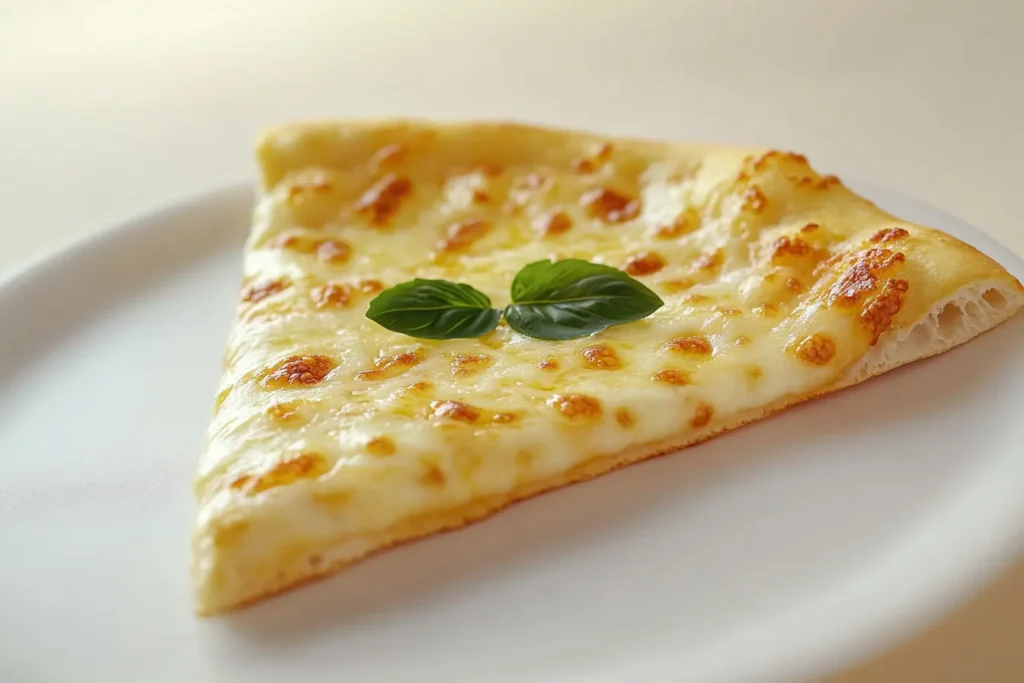
Thick Pizza crust: For those who prefer a heartier base, thick Pizza crusts are the way to go. Chicago deep-dish and Detroit-style Pizza crusts are examples of thick Pizza crust, offering a soft and pillowy texture. These Pizza crusts are baked in deep pans, creating a bread-like base that can hold generous amounts of toppings.
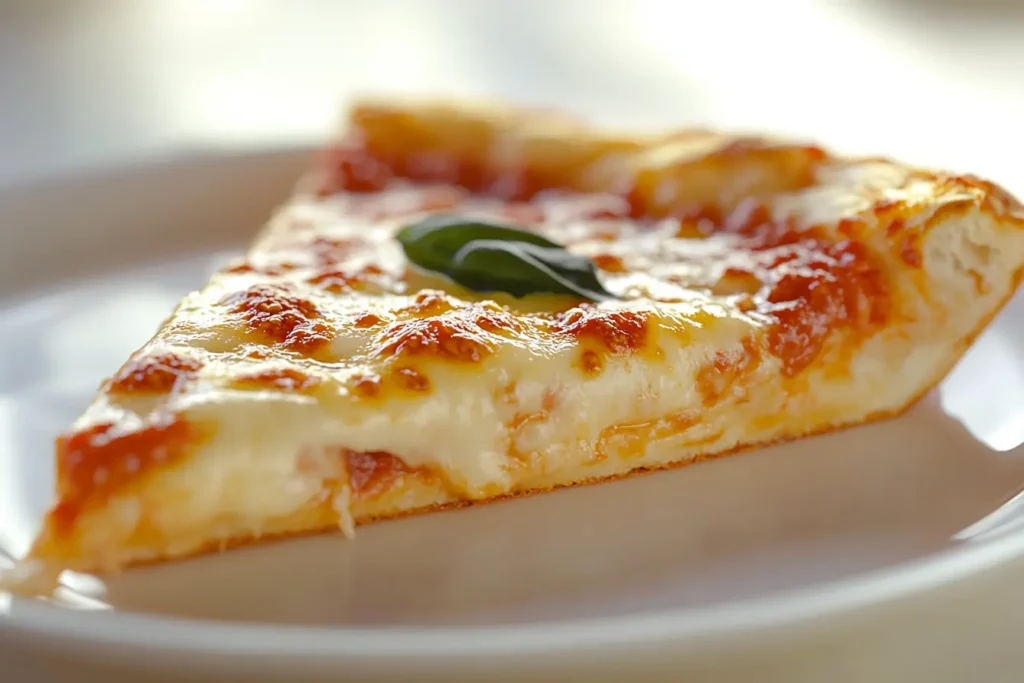
Sicilian Pizza crust: Sicilian Pizza crusts are characterized by their rectangular shape and fluffy, focaccia-like texture. This style often uses olive oil in the dough, contributing to its rich flavor and slightly crispy bottom. It’s baked in a pan, making it ideal for thick slices loaded with robust toppings.
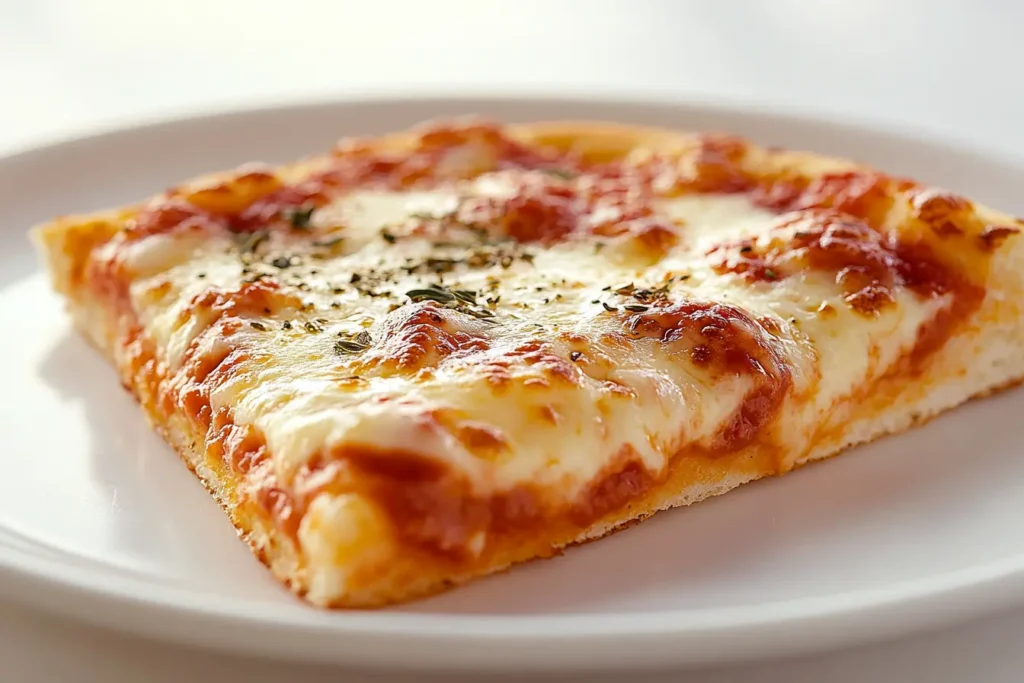
Specialty Crust Pizza:
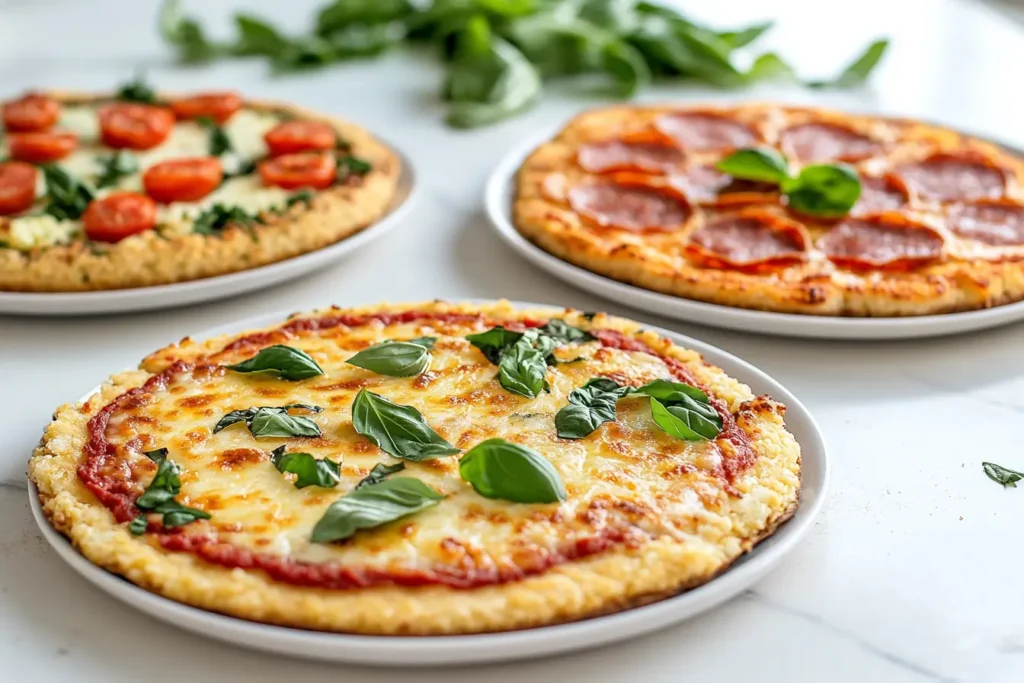
- Gluten-Free Pizza crust: Gluten-free Pizza crusts are crafted from alternative flours such as rice, almond, or chickpea to accommodate those with gluten sensitivities or preferences. These Pizza crusts maintain a light texture and a mild flavor that complements various toppings.
- Cauliflower Pizza crust: A popular choice among health-conscious diners, cauliflower Pizza crust is low in carbohydrates and high in fiber. Made by blending cauliflower with cheese and eggs, this Pizza crust option is a flavorful and nutrient-dense alternative to traditional dough. A study published in the Journal of Nutrition highlights the nutritional benefits of using cauliflower in baked goods.
- Keto and Low-Carb Pizza crust Options: For those following ketogenic or low-carb diets, Pizza crusts made with almond flour, coconut flour, or cheese-based doughs (fathead dough) offer satisfying alternatives. These Pizza crusts are dense, chewy, and flavorful, catering to specific dietary needs without compromising on taste.
Trending Crust Pizza:
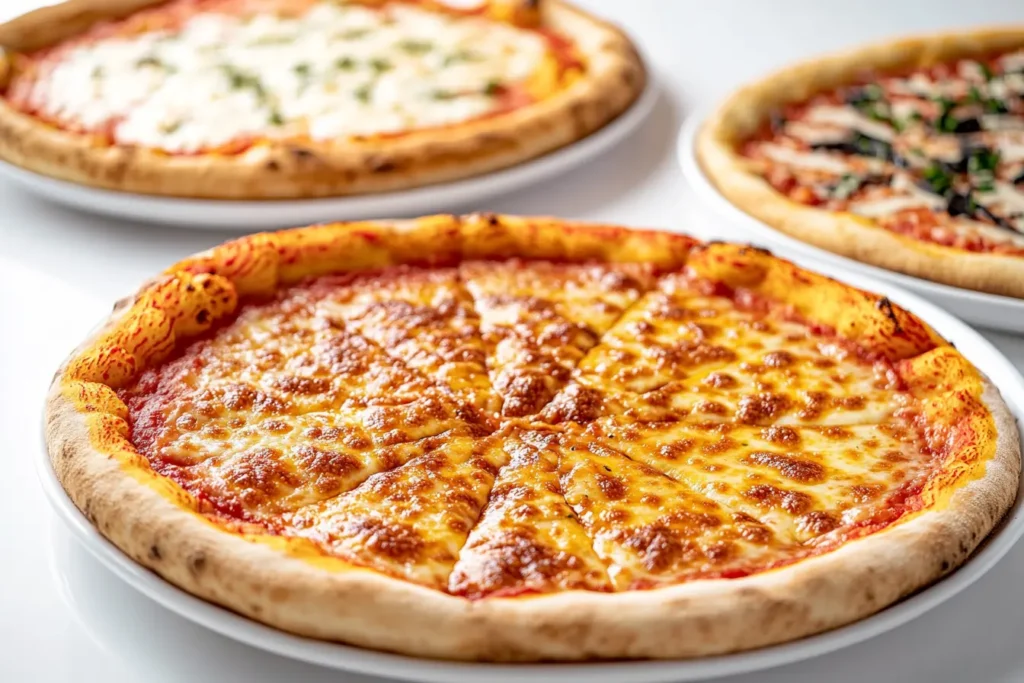
- Stuffed Pizza crust: Stuffed Pizza crusts take indulgence to the next level by incorporating cheese or other fillings like garlic and herbs into the crust’s edges. Popularized by pizza chains, this trend enhances the Pizza crust’s appeal, transforming it into a treat on its own.
- Cheese Pizza crust: Cheese Pizza crusts replace or complement traditional dough with baked cheese, creating a crispy and flavorful base. This trend appeals to cheese lovers and offers a gluten-free option with a unique twist.
- Gourmet Pizza crust: Gourmet Pizza crusts use premium ingredients such as activated charcoal, herbs, or infused oils to elevate the pizza experience. These variations not only add visual appeal but also infuse subtle flavors into the Pizza crust.
How to Make the Perfect Crust Pizza at Home: A Step-by-Step Guide
Crafting the perfect Pizza crust requires a combination of quality ingredients, proper techniques, and attention to detail. Here’s a guide to help you achieve Pizza crust perfection at home.
Ingredients for Perfect Crust Pizza:

- Choosing the Right Flour for Pizza crust: The type of flour you choose significantly impacts the Pizza crust’s texture and flavor. Bread flour, with its high protein content, yields a chewy Pizza crust, while all-purpose flour offers a more tender base. For a crisp Pizza crust, use 00 flour, which is finely milled and ideal for high-temperature baking. Gozney EU offers a detailed guide on the different types of flours and their uses.
- Importance of Yeast and Leavening Agents in Pizza crust: Yeast is a key ingredient that gives the Pizza crust its rise and airy texture. Using fresh or active dry yeast ensures proper fermentation, which contributes to the Pizza crust’s flavor and structure. For quick preparations, instant yeast is a convenient option.
Techniques for Making the Best Crust Pizza:
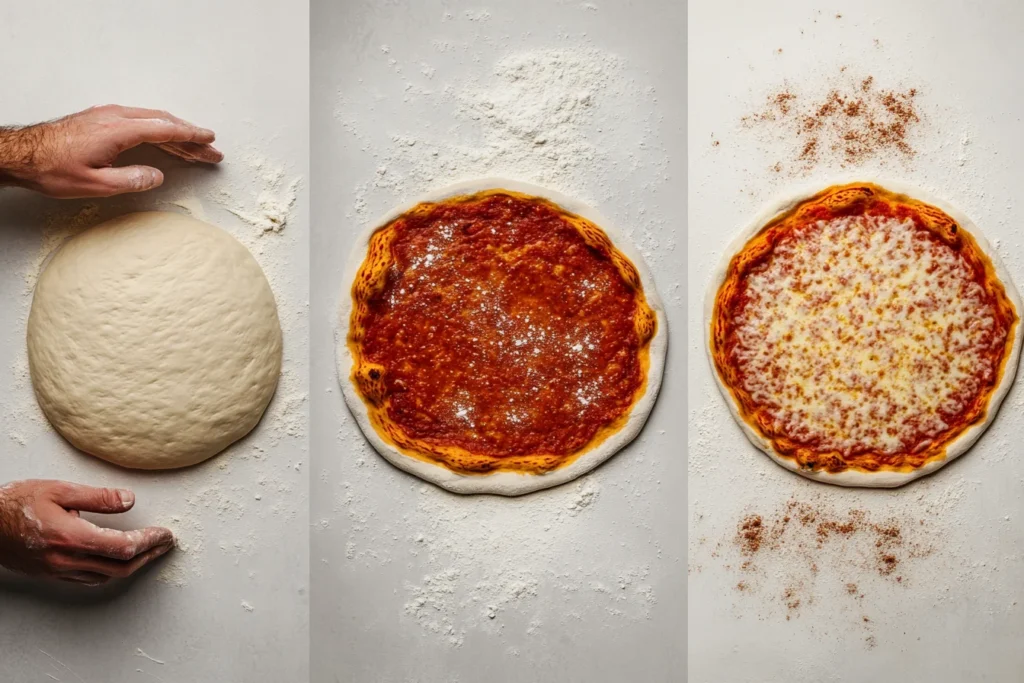
- Kneading Methods for Pizza crust: Kneading develops the gluten in the dough, providing elasticity and strength. Use a combination of folding and pressing techniques to ensure a smooth, cohesive dough. Over-kneading can result in a dense Pizza crust, so stop once the dough becomes stretchy and pliable.
- Fermentation Processes for Pizza crust: Allowing the dough to ferment enhances its flavor and texture. For best results, refrigerate the dough overnight to slow the fermentation process and develop a complex flavor profile. Ensure the dough is covered to prevent drying out.
- Baking Tips for Crispy Pizza crust: Preheating your oven and using a pizza stone or steel ensures even heat distribution for a crispy Pizza crust. Bake at a high temperature (450–500°F) to achieve the desired crispiness. For added crunch, brush the Pizza crust with olive oil before baking.
Click on the name of recipe if you need more information about it:
Mexican Beef and Rice Skillet: Easy and Delicious Recipe
Taco Soup Recipe: Easy & Delicious Family Comfort Food
Mexican Rice in a Rice Cooker: Authentic and Easy
Common Mistakes When Making Crust Pizza:
Even seasoned Pizza crust makers can make mistakes. Here are some common pitfalls to avoid:
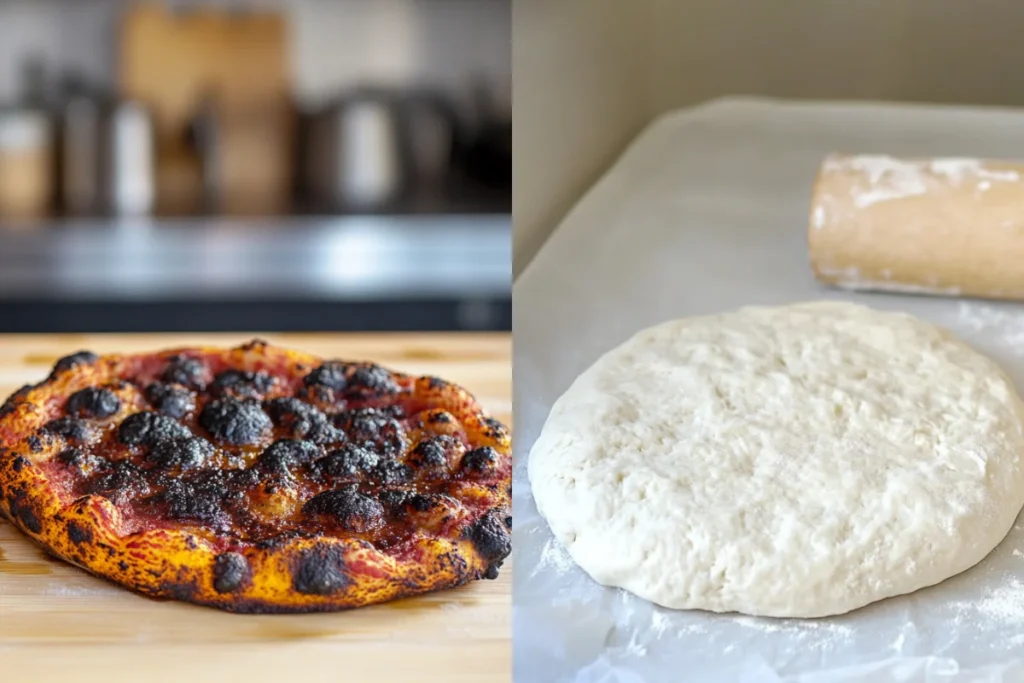
- Overworking the Pizza crust Dough: Overworking the dough can make it tough and difficult to shape. Handle it gently to avoid over-developing the gluten.
- Inappropriate Cooking Temperatures for Pizza crust: Baking at too low a temperature results in a soggy Pizza crust. Ensure your oven is preheated to the right temperature, and avoid opening the door frequently, which can cause heat loss.
By focusing on these ingredients, techniques, and tips, you can create a Pizza crust that’s both delicious and visually appealing, elevating your homemade Pizza crust to restaurant-quality standards.
Healthier Choices: Nutritional Aspects of Crust Pizza
Pizza crust plays a significant role in the nutritional profile of pizza, influencing its calorie count, carbohydrate content, and potential allergens.
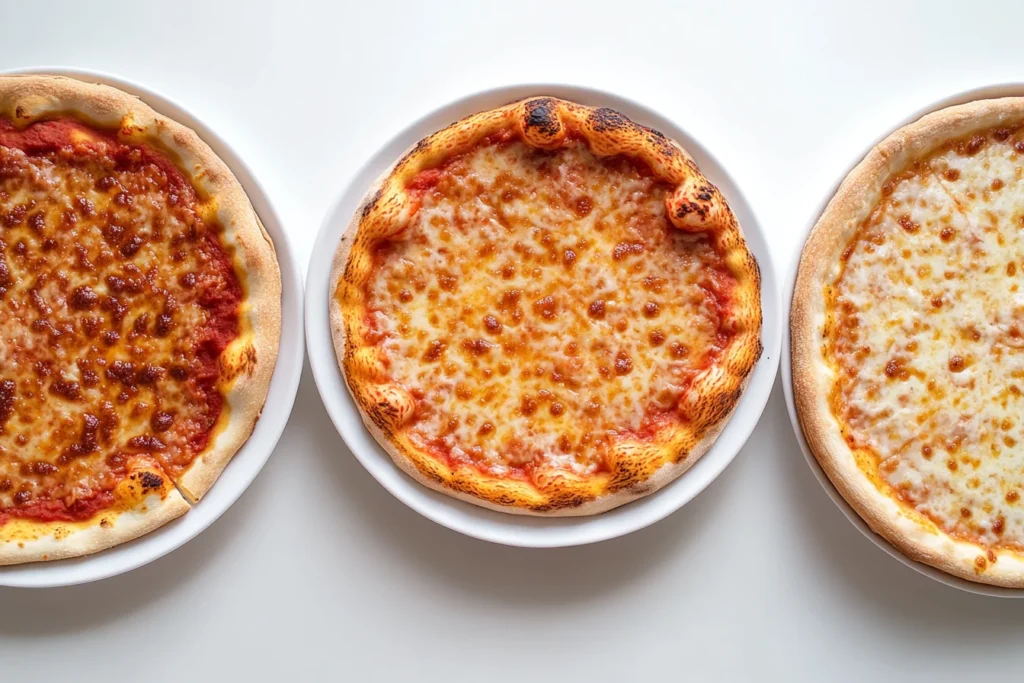
Nutritional Breakdown of Various Crust Pizza Types:
Traditional Pizza crust, typically made from refined wheat flour, are high in carbohydrates and calories but low in fiber and essential nutrients. Whole-grain Pizza crust, on the other hand, provide more fiber, vitamins, and minerals, making them a healthier choice. Gluten-free Pizza crust, made from rice flour, almond flour, or tapioca starch, are suitable for those with gluten intolerance but may lack fiber and protein. The National Institutes of Health offers resources on the nutritional aspects of gluten-free diets.
Gluten and Allergen Considerations for Crust Pizza:
Wheat-based Pizza crust contain gluten, a protein that can cause adverse reactions in individuals with celiac disease or gluten sensitivity. Additionally, some Pizza crust recipes may include dairy or eggs, which could trigger allergies. Gluten-free and allergen-friendly Pizza crust are widely available, but it’s essential to check ingredient labels for hidden allergens.
Healthier Alternatives to Traditional Crust Pizza:
For those seeking a healthier option, cauliflower Pizza crust are a popular choice. Made from cauliflower, cheese, and egg, these Pizza crust are lower in carbohydrates and calories while offering a good dose of vitamins. Other alternatives include Pizza crust made from sweet potato, chickpea flour, or quinoa, which add variety and nutritional benefits like fiber, protein, and antioxidants.
Expert Tips for Perfecting Your Homemade Crust Pizza
Crafting the perfect Pizza crust is an art form, and professional pizzaiolos swear by these techniques:
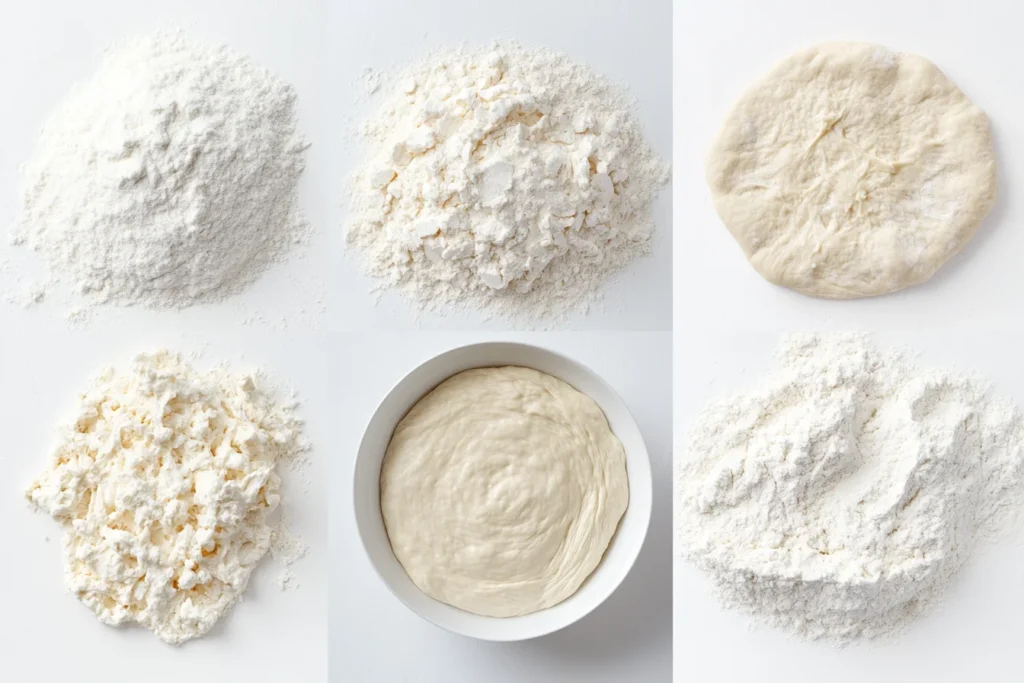
- Choose High-Quality Flour for Pizza crust: Use bread flour or “00” flour for optimal texture and chewiness in your Pizza crust. These flours have higher protein content, leading to better gluten development.
- Cold Fermentation for Pizza crust: Allow your Pizza crust dough to ferment in the refrigerator for 24–72 hours to enhance flavor and texture.
- Hydration Matters for Pizza crust: Maintain a high-hydration dough (60–70% water-to-flour ratio) to ensure a light, airy Pizza crust. A high hydration dough is often used in many traditional pizza restaurants.
- Perfect the Stretch for Pizza crust: Gently stretch the dough by hand instead of rolling it to preserve air bubbles, resulting in a better Pizza crust.
- Use a Pizza Stone or Steel for Pizza crust: Preheat these surfaces for 45–60 minutes to mimic a professional pizza oven, ensuring even cooking and a crispy bottom for your Pizza crust.
- Finish with a Brush of Olive Oil on Your Pizza crust: Before baking, brush the edges with olive oil to enhance flavor and create a golden crust on your Pizza crust.
Home Hacks for Restaurant-Quality Crust Pizza:
- Bake your Pizza crust at the highest temperature your oven allows.
- Use parchment paper for easier handling of your Pizza crust.
- Experiment with pre-baked crusts for convenience without sacrificing quality when making Pizza crust.
Crust Pizza FAQs: Your Questions Answered
What is the difference between thin crust and thick crust Crust Pizza?
Thin crust is crispier, with a lower dough-to-topping ratio, while thick crust is softer and doughier, offering a heartier base for toppings on your Pizza crust.
How do you make a gluten-free Crust Pizza?
Replace wheat flour with gluten-free alternatives like almond or rice flour. Add xanthan gum or psyllium husk for elasticity, and follow the same mixing and fermentation steps as traditional dough when making your Pizza crust.
What’s the secret to a crispy Crust Pizza?
The key lies in hydration, heat, and baking surfaces. Use a high-hydration dough and bake on a preheated pizza stone or steel at a high temperature (450–500°F) for your Pizza crust. Avoid overloading toppings to prevent sogginess.
By mastering these FAQs, you’ll elevate your Pizza crust-making skills for both traditional and alternative crusts.
Conclusion
The crust is the foundation of any great pizza, setting the stage for flavor, texture, and overall enjoyment. Whether it’s a thin, crispy base that complements light toppings or a thick, chewy crust that holds hearty ingredients, the quality of the crust can truly make or break your pizza. By focusing on key techniques—like selecting the right flour, mastering fermentation, and using high heat—you can consistently achieve superior pizza crust results at home.
Pizza-making is as much about creativity as it is about precision. Don’t be afraid to experiment with various crust styles to discover what suits your taste. Try traditional Neapolitan methods for an authentic experience, or explore gluten-free options for a modern twist. Adjust hydration levels, baking times, and even toppings to see how these elements interact with the crust and help you get closer to your dream crust texture.
Remember, pizza is a canvas, and the crust is your brushstroke. With practice and a willingness to innovate, you can achieve professional-quality results that rival your favorite pizzerias. Embrace the journey, and let each pizza you create tell its own delicious story. Now, go ahead and start experimenting with these techniques to perfect your homemade pizza crust.
Important Note: While this article is designed to provide general information, individual results may vary. Always follow safe food-handling practices.
